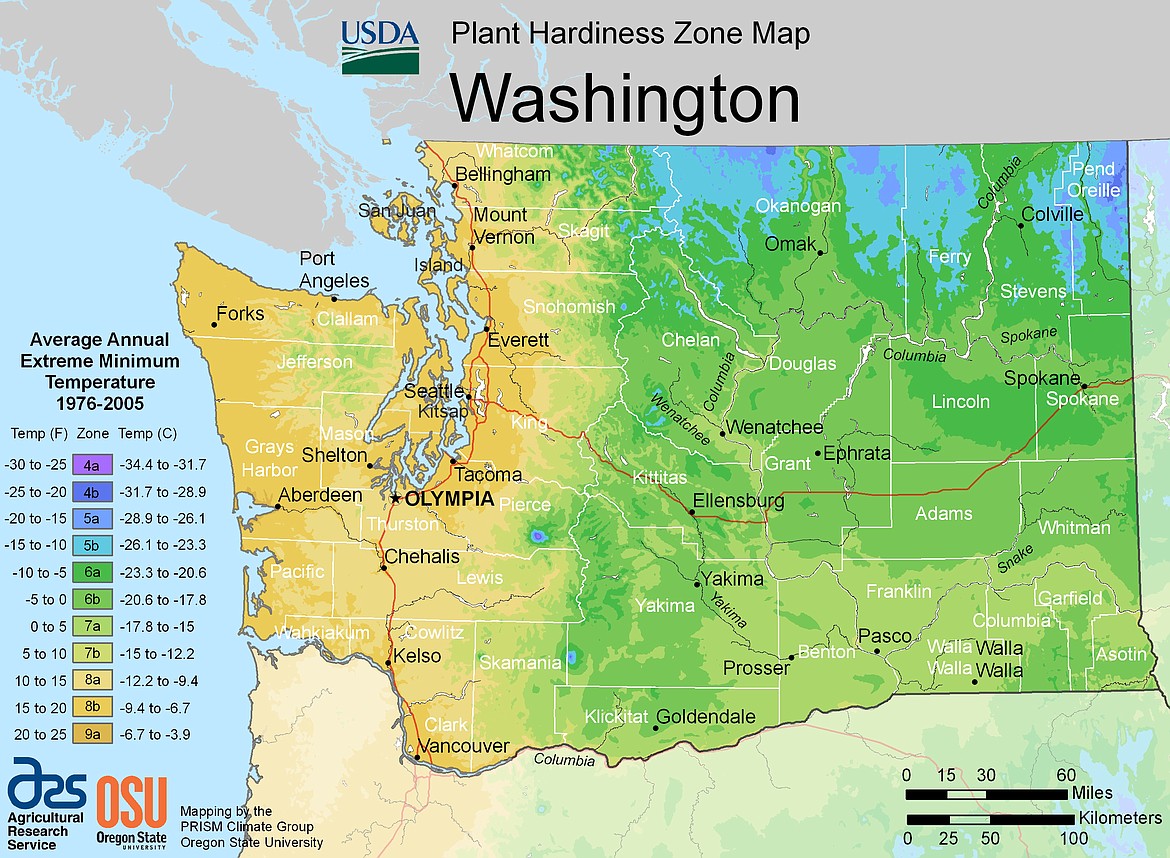Planting time: Finding the right frost dates for your garden
Kris Nesse, WSU Grant-Adams Master Gardener | Columbia Basin Herald | UPDATED 3 years, 10 months AGO
Some of us are gardening gamblers. We start onions, cabbage and broccoli inside very early each new year. Peas are sprouted in damp newspaper to tuck into the garden mid-February. Is this wise? Well, it may not be as risky as it seems. Relying on average temperatures and soil temperature we can make informed decisions about planting times.
In 2012, the USDA Plant Hardiness Zone Map (PHZM) changed for the first time in 30 years. Data from 1976 to 2005 showed most areas an average of one-half zone warmer. The Arbor Day Foundation illustrates this startling change in an animated map found at http://www.arborday.org/media/mapchanges. It indicates at least a five-degree change over much of Grant and Adams counties, leaving most gardeners in Zone 6B, with smaller pockets of Zones 6A and 7A. You can check your own backyard using the USDA’s interactive map: http://planthardiness.ars.usda.gov/PHZMWeb/InteractiveMap.aspx or through Washington State University Extension’s website http://county.wsu.edu/grant-adams/Pages/default.aspx.
So, what does all this zone business have to do with gardening? While many plants will tolerate light frosts, the true warm weather lovers won’t survive temperatures in the 30s. The PHZM indicates statistically when first and last frosts occur. It used to be Master Gardener volunteers would advise clients our local last frost date was May 15. As you can see from the chart, that is no longer true.
USDA Hardiness Zone First Frost Date Last Frost Date
1 July 15 June 15
2 Aug. 15 May 15
3 Sept. 15 May 15
4 Sept. 15 May 15
5 Oct. 15 April 15
6 Oct. 15 April 15
7 Oct. 15 April 15
8 Nov. 15 March 15
9 Dec. 15 Feb. 15
10 Dec. 15 Jan. 31 (sometimes earlier)
11 No frost. No frost.
Gardeners need to remember any PHZM is simply a guide. They are based on average lowest temperature, not the lowest ever. Seed starting calculators based on the PHZM are available from many sources including several at http://awaytogarden.com/when-to-start-what-vegetable-seed-calculators.
In addition to frost dates, soil temperatures factor into decisions about when to seed or transplant various vegetable crops. Beets, carrots, peas, radishes, spinach and others will germinate in 40-degree soil (common in my Soap Lake raised beds in February), while beans won’t germinate unless the soil temperature is at least 60 degrees. A soil thermometer is a gardener’s best friend in the spring. Vegetable seeding schedules are available from many sources including: http://ext100.wsu.edu/spokane/wp-content/uploads/sites/14/2015/02/C103-Vegetable-Seeding-Schedule-14.pdf or http://www.ext.colostate.edu/mg/gardennotes/720.
So check your zone, take the soil’s temperature, and get planting!
For answers to gardening questions, contact the WSU Grant-Adams Master Gardeners via email at ga.mgvolunteers@wsu.edu or visit extension.wsu.edu/grant/gardening.




